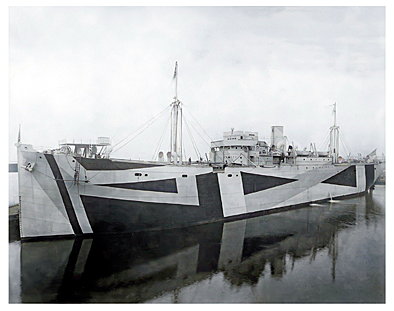 |
Albert Herter mural at the Gare de Paris-Est
|
We’ve talked about the Herter family
before. The family was descended from the well-known
Herter Brothers (Gustave and Christian), who were leading designer-craftsmen in New York in the 19th century. The son of Christian Herter was
Albert Herter (1871-1950), who was a prominent muralist. In turn, his sons were
Everit Herter (1894-1918), a muralist who was among the first to join the
American Camouflage Corps during World War I, and who died in action while serving in France. A second son was
Christian Herter (1895-1966), who was a highly regarded US statesman and served as Secretary of State.
In an earlier post about the family, we only briefly focused on a huge mural (40 feet wide, 15 feet high) that Albert Herter painted after the war and gave to the French people. It was in part a tribute to the French soldiers (called
poilus, French slang for soldiers) who had served in the war. Less obviously, it was as well a tribute to his son. Appropriately, the mural was initially hung in the departure hall of the historic
Gare de Paris-Est in Paris, a major railway terminal, from which so many soldiers had departed for the battlefield.
Recently, I was pleased to find a lengthy paper about that famous mural. It was written by
Mark Levitch, and is titled "En Souvenir: Albert Herter’s Le Depart des Poilus, Aout 1914 at Paris-Est." It was published in a volume of essays about WWI artworks, edited by Margaret Hutchison and Steven Trost, titled
Portraits of Remembrance: Painting, Memory, and the First World War (University of Alabama Press, 2020).
Levitch’s paper is particularly informative because it is based on extensive research, far more complete and detailed than earlier accounts. For example, I had not known, or perhaps I had forgotten, that another American camoufleur, named
John Dwight Bridge, had assisted Albert Herter in completing the mural. As we posted earlier, Bridge is himself of interest because both he and Everit Herter were associated with
Barry Faulkner (a muralist and co-founder of the American Camouflage Corps), who was the cousin and student of
Abbott H. Thayer, the so-called “father of camouflage.” In the years following the war, Bridge married the widow of Everit Herter, Caroline Keck Herter.
In the process of painting this huge railway terminal mural, Albert Herter chose to quietly include members of his own family in his depiction of various families bidding farewell to their soldier sons. To anyone who was unaware of Everit Herter’s wartime death, the mural might easily be interpeted as a generic portrayal (neither factual nor specific) of the sorrow of saying goodbye to one’s soldier son—whose departure may be final.
But things did not work out as smoothly as that. In the years after the war, there was some resentment among the French public about what they saw as the tendency of Americans to claim excessive credit for the war’s success. As a result, there were times when Herter’s mural was seen not primarily as an all-inclusive tribute to French infantry and others, but rather as a means by which the sacrifice of Everit Herter—and the Herter family’s efforts—could upstage the achievements of others.
This was especially reinforced by the mistaken but often repeated claim that an especially prominent soldier in the center of the painting represents Everit Herter. That figure can be clearly seen online,
in a full view of the mural. He is elevated above the others, with arms outstretched, so it doesn’t take much to imagine him as an allusion to Christ on the cross. Hence, one can see how people might assume that this was a slightly veiled tribute to Everit Herter. In various essays over the years, other figures were also mistakingly said to be members of the Herter family.

There is no disagreement that Herter family members are included in the mural. But Levitch denies that the soldier with the outstretched arms is Everit Herter. Instead, the Herter family is quietly clustered on the right. In a detail of the mural (as shown below, along with a diagram of the same section), Albert Herter (the muralist and the father) is holding flowers and clutching his chest (1). His wife (2) stands behind him, and their martyred son, Everit Herter peers out quietly from inside the train (3). Their daughter-in-law (4), the widow of Everit Herter is facing Everit’s father, her hand to her face. And Everit’s fellow camouflage artist (who is soon to marry the widow), John Dwight Bridge (5), is bending down and comforting the sons of the father who had been killed in the war. I hope this is a reasonable explanation.
Levith’s essay is far more interesting, and more detailed, than the summary I have provided above. It makes for thoughtful reading.
























